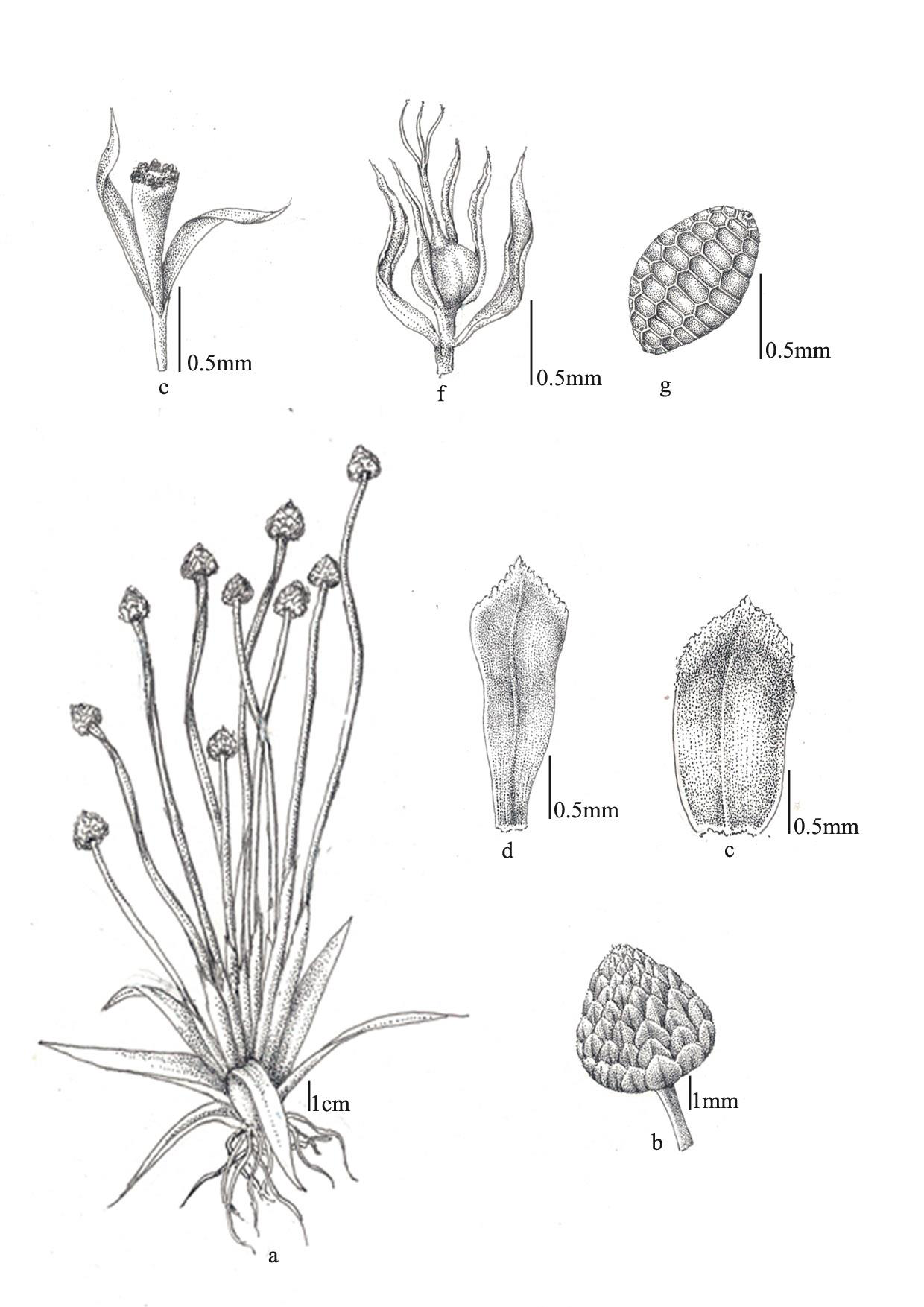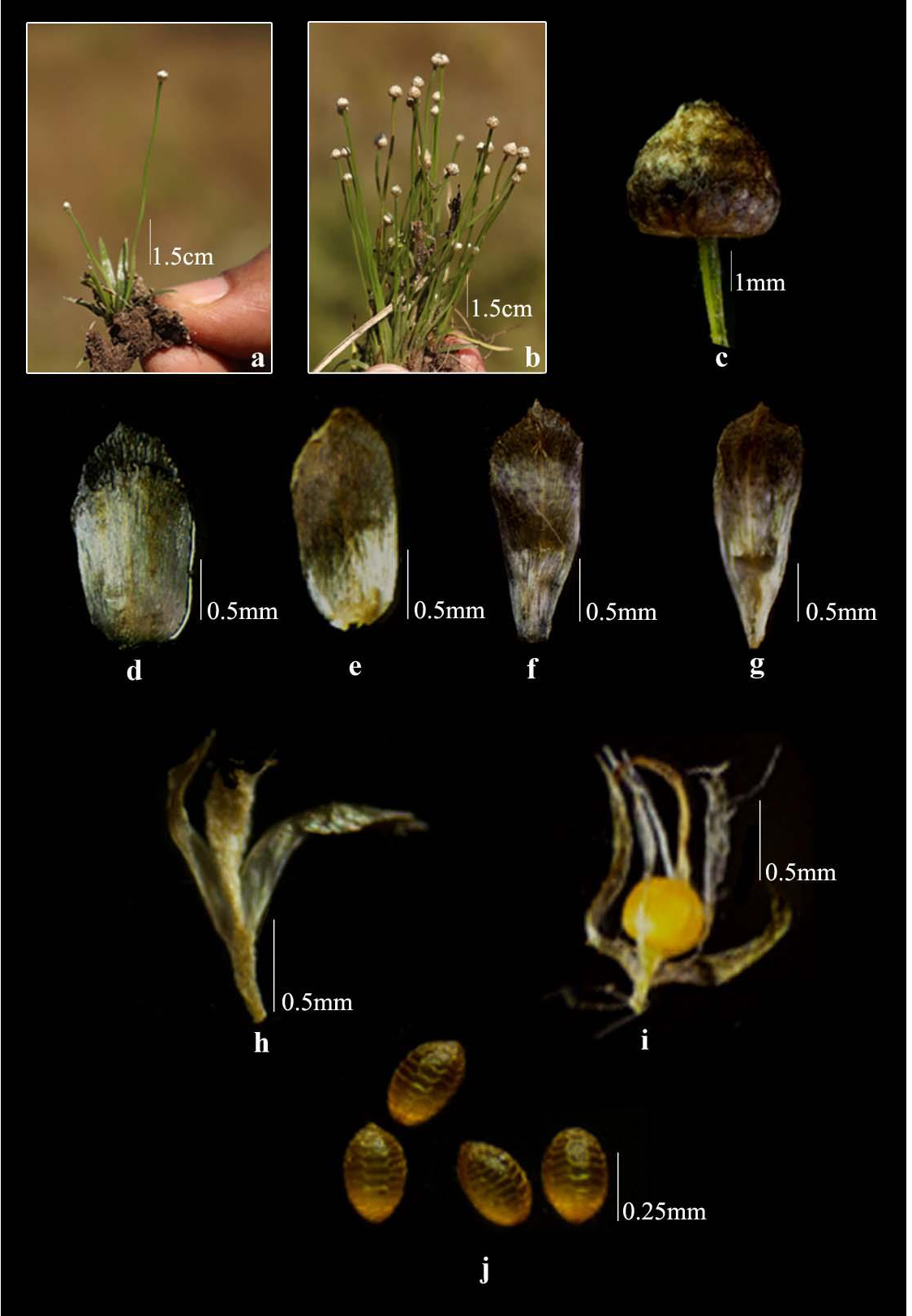Research Article
Eriocaulon hamiltonianum (Eriocaulaceae): A New Distributional Record for Kerala
M.K. Ratheesh Narayanan1*,Sidharth S Nair1, Chaithra K1, Athira Unnikrishnan1, T. Shaju2, M.P. Rijuraj2 and C.N. Sunil3
1Department of Botany, Payyanur College, Edat P.O., Kannur, Kerala, India
2Jawaharlal Nehru Tropical Botanic Garden and Research Institute, Palode P.O., Thiruvananthapuram, Kerala, India
3S.N.M. College, Maliankara P.O., Ernakulum, Kerala, India
2Jawaharlal Nehru Tropical Botanic Garden and Research Institute, Palode P.O., Thiruvananthapuram, Kerala, India
3S.N.M. College, Maliankara P.O., Ernakulum, Kerala, India
*Corresponding author:M.K. Ratheesh Narayanan, Department of Botany, Payyanur College, Edat P.O., Kannur, Kerala, India. E-mail Id: drratheeshpoduval73@gmail.com
Copyright: © M.K. Ratheesh Narayanan, et al. 2024. This is an open access article distributed under the Creative Commons Attribution License, which permits unrestricted use, distribution, and reproduction in any medium, provided the original work is properly cited.
Article Information:Submission: 01/10/2024; Accepted: 04/11/2024; Published: 07/11/2024
Abstract
Eriocaulon hamiltonianum Mart., earlier known only from central and northeast India, has been recorded for the first time in Kerala. This discovery expands the known geographic distribution of the species, providing new insights into its ecological range. A comprehensive description of the species is provided, including detailed nomenclature, illustration, distribution patterns, and photographs.
Keywords:Eriocaulon; Kerala; New Record; Wayanad
Introduction
The genus Eriocaulon L., commonly known as pipeworts,
belongs to the family Eriocaulaceae and was described by Carl
Linnaeus (1753) [1]. It is a subtropical and tropical genus of about
479 species POWO (2020) [2] with centers of diversity in South
America, Africa, and the Indian subcontinent (Leach, 2017) [3]. The
species of Eriocaulon grow exclusively in damp or aquatic places (De
Oliveira & Bove, 2011) [4] and are mostly acaulescent herbs with a
monoecious head inflorescence. Ansari and Balakrishnan (2009) [5]
introduced a new system of classification for the species of Indian
Eriocaulon and established twelve numbered sections based on seed
surface characters. They recognized 80 species, of which 68 are from
Peninsular Indian region, showing the greatest species diversity
and endemism in the area. Since then, 30 more species have been
described from India, bringing the total number to 110 (Shaju et al.,
2022) [6].
During floristic explorations in the Wayanad district of Kerala,
the authors encountered an interesting population of Eriocaulon
in Muthanga Forest Range of Wayanad Wildlife Sanctuary, Kerala.
Upon critical examination and a review of literature (Ansari &
Balakrishnan, 2009) [5], the specimen was identified as Eriocaulon
hamiltonianum Mart., previously known only from central and
northeast India. Thus, this collection represents a new distributional
record for Kerala. A detailed description, along with illustration and
photographs, is provided for easy identification.
Results
Eriocaulon hamiltonianum Martius in Wallich, Pl. Asiat. Rar.
3:29. 1832; Hook.f., Fl. Brit. India 6: 579. 1893; Ruhland in Engl.,
Pflanzenr. !V 30 (13): 107. 1903; Fyson in J. Indian Bot. 2: 313. 1921;
Ansari & Balakr., Eriocaulaceae India (Revised Edition) 114. 2009.
Acaulescent annual herbs. Rootstock absent. Leaves crowded
in to a basal rosette, 1.5–4.5 x 0.2–0.5 cm, linear–lanceolate, acute
at apex, glabrous. Sheaths 2–3 cm long, glabrous; limb ca. 4 mm
Figure 1:Habit, b. Single head, c. Floral bract, d. Involucral bract, e. Male flower, f. Female flower, g. Seed.
Figure 2:(Photo Plate): A and b. Habit (Young and mature plants), c. Single head, d and e. Floral bract (abaxial & adaxial view), f and g. Involucral bract (abaxial andadaxial view), h. Male flower, i. Female flower, j. Seeds.
long, ovate, acute at apex, glabrous. Peduncles 4–41 per plant,
5–11 cm long, striate, glabrous. Heads 3.5–5 mm across, spherical,
straw-colored. Receptacles cylindric, pilose. Involucral bracts 1.5–2
x 0.7–1 mm, oblong–lanceolate to oblanceolate, acute to obtuse at
apex, chartaceous, glabrous, straw–coloured. Floral bracts 2–2.3 x
0.6–0.8 mm, oblanceolate, base cuneate, acute at apex, chartaceous,
glabrous, straw–coloured. Male flowers: Pedicels 0.3–0.5 mm long;
sepals 2, free, 1–1.2 x 0.3–0.4 mm, oblanceolate–falcate, acute at apex,
glabrous, straw–coloured to black; stipe of corolla 0.5–0.7 mm long;
petals 3, minute; stamens 6, anthers globose, black. Female flowers:
Pedicels 0.3–0.5 mm long.; sepals 2 or rarely 3, free, sub-equal, 1–1,3
x 0.1–0.2 mm, linear, acuminate at apex, glabrous, black, the middle
one if present minute; petals 3, free, sub-equal, 0.8–1.2 mm long,
linear or linear–oblanceolate, acuminate at apex without any black
gland, hyaline with 1–2 white hoary hairs at apex; stipitate between
sepals and petals; ovary stalked, ca.0.3 mm long, sub-globose; style 3-
fid. Seeds 0.3–0.4 x 0.2–0.3 mm, ovoid, apiculate, pale yellow; cells of
seed coat transversely elongated, aligned in vertical rows; appendages
in the form of a pair of continuous ribbon like bands from transverse
and vertical radial walls conforming to its length.
Flowering and Fruiting:October–February.
Habitat:Marshy grass land in Dry deciduous forests.
Distribution: INDIA: The species is found in Maharashtra, Assam, Madhya Pradesh, and West Bengal. Recent records also indicate its presence in Kerala, specifically in the Wayanad district, marking a new distributional record for the state
Habitat:Marshy grass land in Dry deciduous forests.
Distribution: INDIA: The species is found in Maharashtra, Assam, Madhya Pradesh, and West Bengal. Recent records also indicate its presence in Kerala, specifically in the Wayanad district, marking a new distributional record for the state
WORLD:Outside India, Eriocaulon hamiltonianum is reported
from Thailand, New Guinea, and Indonesia, typically in subtropical
and tropical regions. The species thrives in wetland habitats such
as marshes, riverbanks, and forest clearings, often at low to midelevations.
Specimen examined:INDIA, KERALA, Wayanad District,
Muthanga (Wayanad Wildlife Sanctuary), Nallorvayal, ca.± 800 M,
December 2022, C.N. Sunil & Ratheesh Narayanan 4889 (SNMH!).
Acknowledgements
The authors are thankful to the Manager S.N.M. College,
Maliankara; the Presidents of Sir Syed college and Payyanur
Educational Society, Kannur University, Kerala; and the Director of
the Jawaharlal Nehru Tropical Botanic Garden and Research Institute
(JNTBGRI), Palode, Thiruvananthapuram for providing facilities. The
Forest Department, Government of Kerala, is highly acknowledged
for granting permission to collect the specimens.


